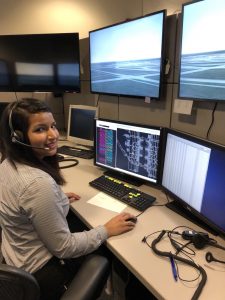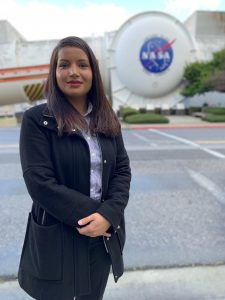If you’re fascinated by the idea of interning at NASA, contributing to NASA missions and exploring the extraordinary every day, you’ve come to the right place. Listen to #NASAinterns experiences via NASA’s Podcasts! Don’t see a topic here that you want to learn more about? Tweet us your recommendation!
Houston, We Have a Podcast: How to Be a Successful Intern at NASA
Interns Jaden Chambers from Kennedy Space Center and Leah Davis from Johnson Space Center are joined by mentor Kelly Smith in this episode examining the highly effective habits of successful interns. This episode will be available July 29 at https://www.nasa.gov/johnson/HWHAP.
The Invisible Network Podcast: 2021 Interns
Each year, NASA’s Space Communications and Navigation (SCaN) Internship Project welcomes students of all levels to develop projects of real benefit to the agency while earning real world experience in their fields. In this episode of The Invisible Network podcast, we’ll speak with members of 2021’s intern cohort at three different NASA centers. This episode was published on July 29 at https://www.nasa.gov/invisible.
Small Steps, Giant Leaps Podcast: Intern Takeover
Interns take over the Small Steps, Giant Leaps, podcast from NASA’s Academy of Program/Project & Engineering Leadership (APPEL) Knowledge Services. This episode was published on July 29 at https://www.nasa.gov/podcasts/small-steps-giant-leaps.
Women in STEM
Sophia Hahn, Shelita Hall, and Emily Anderson, NASA interns from across the agency, discuss being women in STEM (science, technology, engineering, or math), their journey to work at NASA, and the unique opportunities they have experienced during their internship. This episode was recorded on June 14, 2021 and available at https://www.nasa.gov/johnson/HWHAP/women-in-stem.
Uncommon Origins
Shawn Cvetezar, Laura Paulino, and Don Caluya, NASA interns representing NASA’s Marshall Space Flight Center, Ames Research Center, and Johnson Space Center, respectively, reflect upon the non-traditional paths that led them to NASA and share the many areas and projects that are benefitting from their experience. This episode was recorded on May 27, 2021 and available at https://www.nasa.gov/johnson/HWHAP/uncommon-origins.
Citizen Science on Station
Sarah Smith, a NASA intern, interviews students who were recently selected to fly their experiments to the International Space Station as part of the program under NASA’s STEM on Station initiative called Student Payload Opportunity with Citizen Science, or SPOCS. The interviews for this episode were recorded in March of 2021 and available at https://www.nasa.gov/johnson/HWHAP/citizen-science-on-station.
Better Together
Shaneequa Vereen, public affairs specialist at NASA’s Johnson Space Center, speaks with NASA interns as they recount their journey with NASA, sharing their backgrounds and experiences they had before and during their time with the agency. The content for this episode was recorded on February 5, 2021 and available at https://www.nasa.gov/johnson/HWHAP/better-together.
Pathways
Jonathan Abary, Pathways Program Manager, and Alexis Vance, Pathways intern in the crew and thermal systems division, discuss the Pathways internship program at NASA Johnson Space Center. This podcast was recorded on March 20th, 2019 and available at https://www.nasa.gov/johnson/HWHAP/pathways.
Want more? Learn more about NASA Internships by:
- Reading intern stories and blogs!
- Following us on Facebook, Twitter, and Instagram.
- Subscribing to NASA STEM YouTube and watching all intern-related videos.
- Reading the 10 Things You Can Do Now to Prepare for a NASA Internship.
- Reading How to Prepare to Meet NASA at Your Upcoming Virtual Conference.
- Reading the 6 Habits of Effective Interns.
- Reading the 5 Misconceptions about Applying for a NASA internship.
As NASA continues to move forward with the Artemis program, you, the Artemis Generation and future STEM workforce, will help take us to distant worlds. Are you ready? Visit us and apply at https://intern.nasa.gov.









